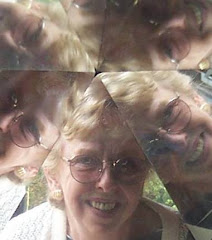Looking Back needs update with new Supreme Court Ruling
As I sent the book Looking Back to the editor, I expected to be finished with it except for making the changes she suggested. Instead, one important, historical news item after another has filled the airwaves during the past week, and some of them seem to be important to the book's promise to cover history from the '40s to the present.
For instance, yesterday the Supreme Court turned back the clock on racial integration. So in the year of the 50th anniversary of school desegregation in Little Rock, racial diversity is no longer a goal of our society. Apparently, neither is equal education for all, because that will certainly change as many parents rush to move their children to new, segregated schools.
Why does this disturb me? Well, 50 years ago this September, I was one of the 2000 white students at Little Rock Central High who had our lives turned into a media frenzy by the forced integration of our school when nine black students were admitted. We lived a year filled with fear, pain, and humiliation as we watched on TV nightly as mobs of racist bigots, with the help of an over-zealous mob of photographers and reporters, turned what would probably have been a non-event, or at least a less dramatic moment in history, into a media circus.
We faced almost daily bomb threats, and had to nervously stand around outside while all lockers in the building were searched for explosives. We lived in fear that our school would suddenly be bombed, or closed down by politicians trying to placate their most vocal voters. Our parents were frightened out of their minds as they sent us off to school each day to face, what? No one knew for sure.
We students had no voice in what was happening. We were merely victims of a Court ruling and were suddenly picked out of a lottery of faceless young people to become guinea pigs for that first experiment in integration in the South. We were forced to grow up—to prove that we were more adult than the racists who waved signs and shouted in front of the school each day. And yes, we were scared. Yet, more than 600 seniors managed to graduate that year, along with one black student.
Students the next year weren’t so lucky. Schools were closed down and some dropped out. Others were forced to live with relatives out of town or else their parents had to pay for them to attend private schools.
That is the price we paid. Now, after all these years, we find that it was all for nothing. A Supreme Court that is out of touch with the real world, real lives, of people in this country, both black and white, has decided that racial diversity doesn’t matter. So, if parents want their kids to live in an all-white (or black, or Asian, or Hispanic) community and not have exposure to others of different races, they can move to segregated neighborhoods where they never have to rub shoulders with someone different from them.
That’s not the real world. Well, yes it is in some exclusive gated communities like where Supreme Court Justices live, but do the rest of us really want things to be like they were back before integration? Personally, I think my life has been richer for knowing people of all races. How would I have survived moving to Honolulu in 1964, where white faces were few and far between? What would I have done when I was sent to a black home as an interior designer? Refuse to go in? Walk in and say, “Hi, oh I see you’re black. Too bad. Goodbye”?
Right now, I’m thinking this is the scariest thing our Supreme Court has ever done—even more frightening than the 1954 Brown vs. Board of Education was to those of us in Little Rock at the time. Maybe I’m over-reacting, but I worry about more race riots and violence, more hatred and less respect and understanding of others. I hope I’m wrong.
The sad thing is, I can see the point of people who don’t want their children bused out of their own neighborhood. It has to be hard to put a child on a bus early each morning and not have her or him come home until late. But, as I write in the book, no ethical question is either black or white. There are all shades of gray when these types of problems face us. I feel with this decision, the Supreme Court has created a situation that will haunt us all for a long time.
And I’m mad about having gone through all I went through at Central High, only to find out 50 years later that it was all for nothing. I'm mad about the sacrifices we made, and for what? What had been accomplished has been erased by this decision, and justice has not been served by the “Justices.” If they’re concerned at all about the future, they should realize we’re a nation where the Caucasian race will soon be a minority. Isn’t it important that we be exposed to other cultures, other races, before we become the minority?
You can read all about Central High in 1957 in the book, Looking Back, when it is released in July (or possibly, August). In it are essays by two other students who were there that year. In all, 22 exceptionally expressive essays and poems on a wide variety of historic events provide personal insight into the times that shaped Boomers’ lives, and the lives of all of us.
I’ll list the essays and point out the contributors who are also subscribers to Portable Writing Newsletter as soon as the book comes out.
Friday, June 29, 2007
Subscribe to:
Post Comments (Atom)


No comments:
Post a Comment